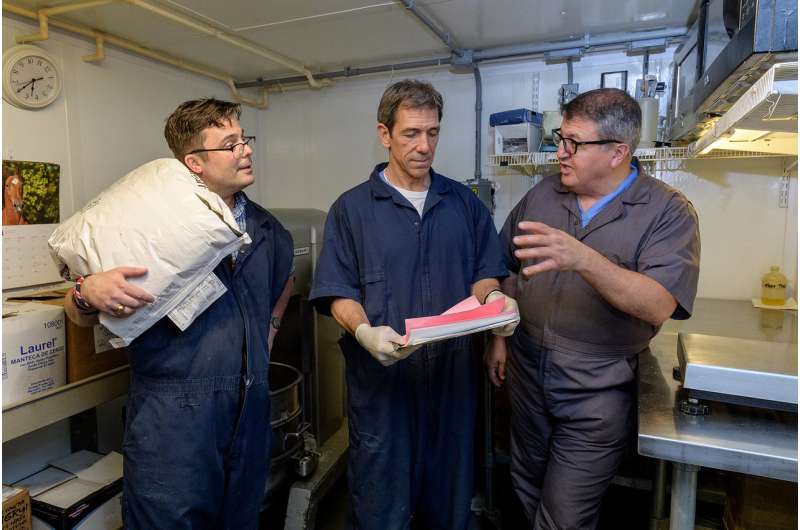Access to rare pigs could provide researchers a more effective way to develop treatments for diabetes

A unique breed of pig equipped with a heart that mimics a human's heart and has a special genetic mutation could provide researchers and scientists the key to a cure for diabetes and related complications.
CorVus Biomedical LLC, a Purdue University- and Indiana University-related startup, aims to breed and sell Ossabaw miniature pigs to researchers around the country. The company was co-founded by Michael Sturek, professor and department chair of the IU School of Medicine Department of Cellular and Integrative Physiology and professor in Purdue's Weldon School of Biomedical Engineering. Mouhamad Alloosh, an associate research professor, and James Byrd, a research technician, both in the IU School of Medicine's Department of Cellular and Integrative Physiology, are company co-founders.
In 2002 Sturek and a team of researchers acquired 26 feral Ossabaw miniature pigs from Ossabaw Island, one of the Sea Islands in the Atlantic Ocean off the coast of Georgia. The pigs have a natural propensity for obesity and developing pre-diabetes, which make them ideal for research purposes, Sturek said.
"Ossabaw pigs naturally developed the propensity to obesity and pre-diabetes as a survival mechanism to cope with periods of starvation on Ossabaw Island," he said. "The pigs' form of pre-diabetes could reverse itself when the animals stopped gorging and started living lean again. We thought this genetic mutation and coping mechanism, and the pigs' heart, which mimics a human's fantastically, could provide the key to a cure for diabetes and the terrible long-term complications like heart disease, in humans."
About 30 million people in the United States, or more than 9 percent of the total population, have diabetes, according to the Centers for Disease Control and Prevention. Additionally, more than 84 million Americans have pre-diabetes and approximately 30 percent of them will develop type 2 diabetes.
"In humans a few long-term complications that can occur from diabetes include blindness, heart disease, obesity, fatty liver and polycystic ovary syndrome. These pigs provide the opportunity to test different drugs and devices, and even new types of bariatric surgery, more relevant to humans," Sturek said. "Ossabaws really are one of the most vital research specimens in the world to translate cures from basic lab research to humans."
Sturek said other animals don't provide the same research benefits.
"The Ossabaw pigs as we found them had never been touched by civilization, so they are at their purest pedigree. Other animals studied in biomedical research include mice; however, mice are so far removed from humanlike features that it's hard to gauge effectiveness of a treatment in humans," he said. "Ossabaw pigs can gain four times as much fat on the same calories than a normal farm pig. Normal farm pigs don't have the ability to gain as much fat as Ossabaws or even develop diabetes. The miniature Ossabaws are much preferred for research because of their efficiencies of scale."
CorVus Biomedical has contracts to sell the pigs to scientists in the next several weeks after the CorVus facility construction is completed.
"Right now we are the largest research and breeding colony of the Ossabaw pig in the world and we will expand further with our new facility," Sturek said. "It's important for us as a company to be able to produce these animals at a reasonable cost, and aim to operate more cost-effectively and provide more widespread access to these pigs for the future of research and medicine for diabetes."
CorVus has licensed its innovation through the Purdue Research Foundation Office of Technology Commercialization and the Indiana University Research and Technology Corp.
"During the research phase at Purdue and IU, independent of the company, we sold the pigs to over 140 research institutions. We know scientists recognize the value and benefit of the Ossabaws," Sturek said. "We are the only company that is big enough to produce enough pigs so that scientists can have that access. We are excited to get our production site up and running, selling the pigs to researchers to study at their own sites."

















